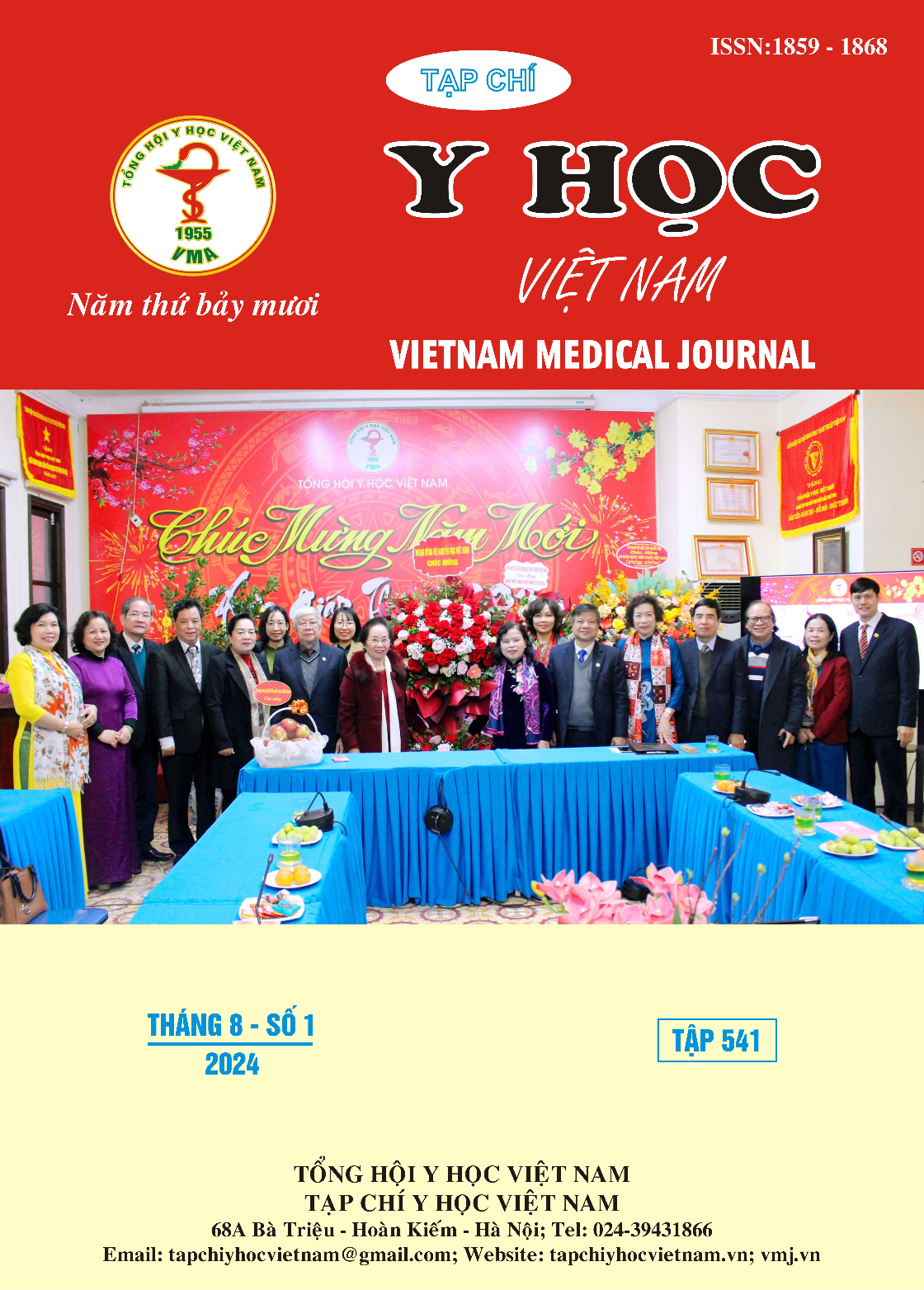THE RATE OF CESAREAN SECTION AND THE RELATIONSHIP WITH THE PREGNANT WOMAN’S COMPANION DURING LABOR AT HUNG VUONG HOSPITAL
Main Article Content
Abstract
Background: The American Association of Obstetricians and Gynecologists (ACOG) recommends a number of measures to reduce the rate of cesarean section, including the model of a person accompanying pregnant women during labor. This study aims to evaluate and compare the cesarean section rate between pregnant women with or without a companion in labor. Objective: Compare the rate of cesarean section between pregnant women with a companion in labor and without a companion in labor and the relationship between companion factors in labor and other pregnancy outcomes. Method: Prospective cohort study on 394 pregnant women giving birth at the service area of the Department of Labor and Delivery of Hung Vuong Hospital (197 pregnant women with a companion and 197 pregnant women without a companion) during the period from December 2023 to January 2024. Results: The cesarean section rate in the group without a companion in labor was 41.6% (95% CI: 34.7 - 48.5) and the cesarean section rate in the group with a companion in labor was 29.4% (95% CI: 23.1 - 35.8). Having a companion reduces the risk of cesarean section by 0.65 times (95% CI: 0.46 - 0.91) and the likelihood of receiving obstetric pain relief increases by 1.51 times (95% CI: 1.01 - 2.26) compared to the group without a companion. Conclusion: The factor of having a companion reduces the risk of cesarean section compared to the group of pregnant women without a companion. It is necessary to strengthen counseling for pregnant women during pregnancy and labor about the impact and benefits of having a companion during labor. Companions also need detailed instructions to clearly understand their roles, responsibilities and what needs to be done to support the pregnant woman during labor.
Article Details
Keywords
companion in labor, cesarean section rate, pregnancy outcome.
References
2. Betran AP, Ye J, Moller AB, Souza JP, Zhang J. Trends and projections of caesarean section rates: global and regional estimates. BMJ Glob Health. Jun 2021;6(6)doi:10.1136/bmjgh-2021-005671
3. Takegata M, Smith C, Nguyen HAT, et al. Reasons for Increased Caesarean Section Rate in Vietnam: A Qualitative Study among Vietnamese Mothers and Health Care Professionals. Healthcare (Basel). Feb 21 2020;8(1)doi: 10.3390/healthcare8010041
4. Giang HTN, Duy DTT, Hieu LTM, et al. Factors associated with the very high caesarean section rate in urban areas of Vietnam. PLoS One. 2022;17(8):e0273847. doi:10.1371/journal.pone.0273847
5. World Health Organization. Companion of choice during labour and childbirth for improved quality of care. Accessed 4 September 2020, https://www.who.int/publications/i/item/WHO-SRH-20.13
6. Bohren MA, Berger BO, Munthe-Kaas H, Tunçalp Ö. Perceptions and experiences of labour companionship: a qualitative evidence synthesis. Cochrane Database Syst Rev. Mar 18 2019;3(3): Cd012449. doi:10.1002/14651858. CD012449.pub2
7. Đoàn Vũ Đại Nam, Nguyễn Duy Tài. Khảo sát tỉ lệ mổ lấy thai theo nhóm phân loại của Robson tại bệnh viện Hùng Vương 2016 - 2017. Tạp chí Y học Thành phố Hồ Chí Minh - Chuyên đề Bà mẹ và trẻ em. 2018;Tập 22, số 1:73-75.
8. Hoàng Thị Diễm Tuyết, Nguyễn Bảo Trị, Nguyễn Thị Kim Hà, et al. Tỷ lệ nhiễm khuẩn vết mổ nông với phương pháp thay găng trước khi đóng bụng trong phẫu thuật mổ lấy thai. Tạp chí Y học Việt Nam. 2021;tập 508, số 1:312-315.
9. Dubey K, Sharma N, Chawla D, Khatuja R, Jain S. Impact of Birth Companionship on Maternal and Fetal Outcomes in Primigravida Women in a Government Tertiary Care Center. Cureus. May 2023;15(5): e38497. doi:10.7759/ cureus.38497
10. Bohren MA, Hofmeyr GJ, Sakala C, Fukuzawa RK, Cuthbert A. Continuous support for women during childbirth. Cochrane Database Syst Rev. Jul 6 2017;7(7):Cd003766. doi:10.1002/ 14651858.CD003766.pub6


